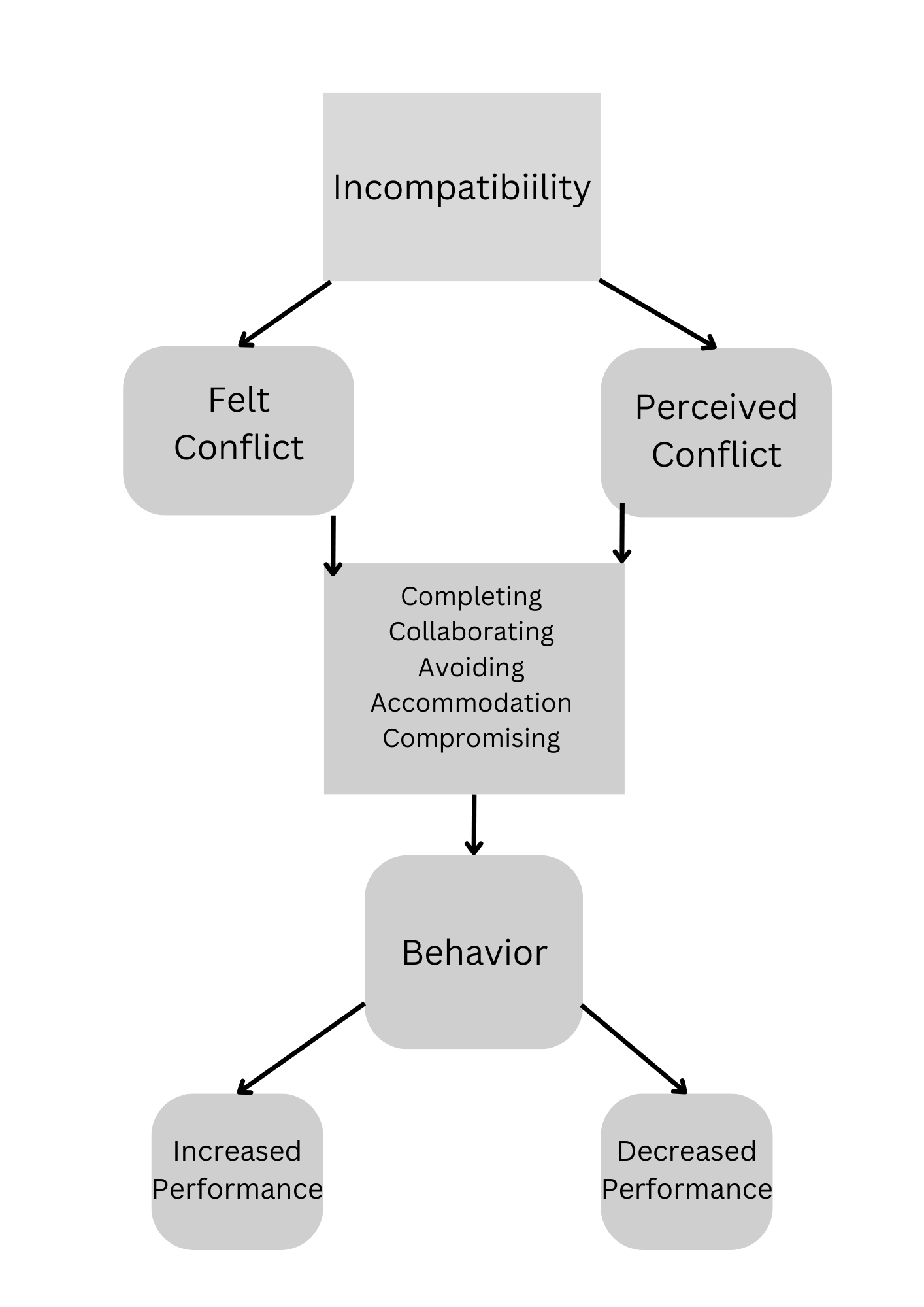Conflict is a natural part of human interactions, and it can arise in various contexts, including the workplace. Effective conflict management is crucial for maintaining a healthy work environment, fostering collaboration, and achieving organizational goals. Here are key principles and strategies for managing conflict:
Principles of Conflict Management:
- Address Conflicts Early:
- Early intervention can prevent conflicts from escalating and becoming more challenging to resolve. Encourage open communication to address issues as they arise.
- Promote Active Listening:
- Ensure that parties involved in the conflict actively listen to each other. Understanding the perspectives and concerns of all parties is essential for finding common ground.
- Maintain Emotional Control:
- Encourage individuals to manage their emotions during conflicts. Emotional reactions can escalate tensions and hinder rational problem-solving.
- Focus on the Issue, Not Personalities:
- Emphasize addressing the specific issue at hand rather than personal attacks or blame. This helps keep discussions constructive and focused on finding solutions.
- Seek Win-Win Solutions:
- Aim for solutions that benefit all parties involved. Collaborative problem-solving can lead to mutually beneficial outcomes and promote a positive work environment.
- Encourage Open Communication:
- Create an environment where individuals feel comfortable expressing their concerns. Open communication helps identify underlying issues and promotes transparency.
Strategies for Conflict Management:
- Collaborative Problem-Solving:
- Description: Bring conflicting parties together to collaboratively identify the root causes of the conflict and work towards mutually acceptable solutions.
- Application: Team meetings, facilitated discussions, and brainstorming sessions.
- Negotiation:
- Description: Allow conflicting parties to negotiate and reach a compromise that addresses their respective needs and concerns.
- Application: Mediation sessions, facilitated negotiations, and conflict resolution meetings.
- Mediation:
- Description: Bring in a neutral third party (mediator) to help facilitate communication, guide discussions, and assist in finding a resolution.
- Application: Mediation sessions facilitated by HR professionals or external mediators.
- Conflict Resolution Training:
- Description: Provide training to employees and teams on conflict resolution skills, communication strategies, and effective problem-solving.
- Application: Workshops, seminars, and ongoing training programs.
- Establish Clear Policies and Procedures:
- Description: Develop and communicate clear policies and procedures for conflict resolution within the organization. Ensure that employees know how to report conflicts and seek resolution.
- Application: Employee handbooks, training sessions, and regular communication.
- Leadership Intervention:
- Description: Leaders play a crucial role in managing conflicts within their teams. Leaders should be proactive in addressing issues, providing guidance, and fostering a positive work culture.
- Application: One-on-one discussions, team meetings, and leadership training.
- Use Constructive Feedback:
- Description: Provide feedback that is specific, constructive, and focused on the behavior or actions causing the conflict. Avoid personal attacks.
- Application: Performance reviews, coaching sessions, and feedback discussions.
- Establish a Conflict Resolution Team:
- Description: Create a dedicated team or designate individuals within the organization to handle conflict resolution. These individuals can serve as mediators and facilitators.
- Application: HR professionals, designated conflict resolution specialists, or a dedicated conflict resolution committee.
Follow-Up and Evaluation:
- Monitor and Evaluate Solutions:
- Description: After implementing solutions, monitor their effectiveness and gather feedback from involved parties. Evaluate whether the resolution has addressed the root causes of the conflict.
- Application: Follow-up meetings, surveys, and ongoing communication.
- Learn from Conflicts:
- Description: Treat conflicts as opportunities for learning and improvement. Analyze the causes of conflicts to identify systemic issues that can be addressed to prevent future conflicts.
- Application: After-action reviews, continuous improvement initiatives, and organizational development efforts.
- Document Resolutions:
- Description: Keep records of conflict resolutions, including the agreed-upon solutions and any changes made to address underlying issues. This documentation can be valuable for future reference.
- Application: Written reports, electronic records, and conflict resolution databases.
By implementing these principles and strategies, organizations can create a culture that acknowledges and addresses conflicts in a constructive manner, leading to improved relationships, increased collaboration, and a more positive work environment.
